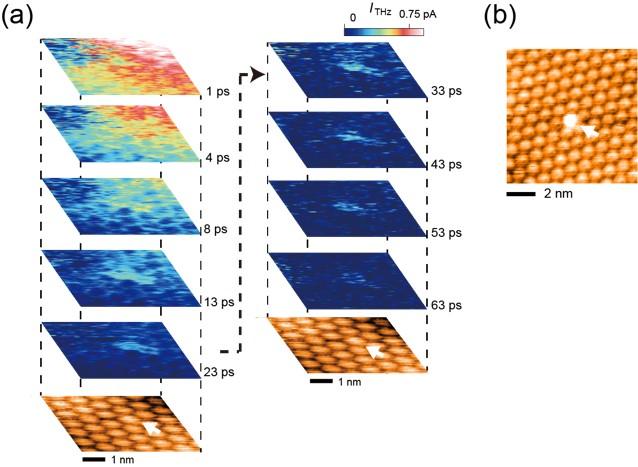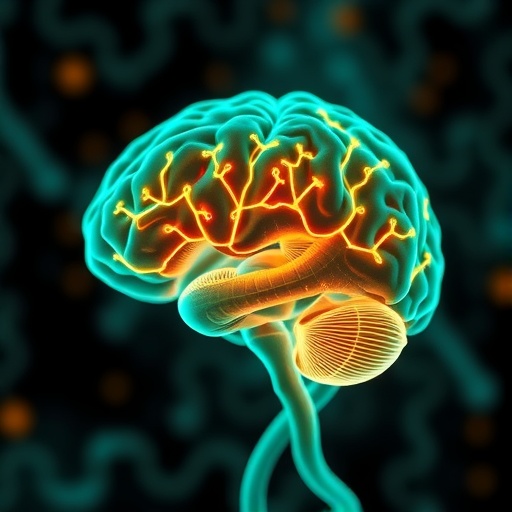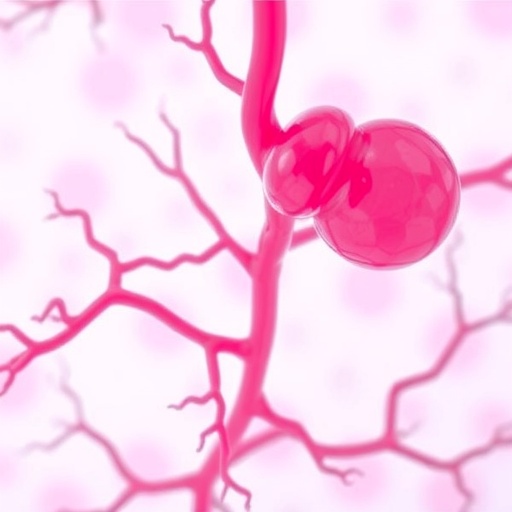Scientists at the University of Tsukuba combine scanning tunneling microscopy with ultrafast spectroscopy to image the motion of electrons with unprecedented resolution, which may lead to advances in semiconductors and optoelectronics

Credit: University of Tsukuba
Tsukuba, Japan – A team of researchers from the Faculty of Pure and Applied Sciences at the University of Tsukuba filmed the ultrafast motion of electrons with sub-nanoscale spatial resolution. This work provides a powerful tool for studying the operation of semiconductor devices, which can lead to more efficient electronic devices.
The ability to construct ever smaller and faster smartphones and computer chips depends on the ability of semiconductor manufacturers to understand how the electrons that carry information are affected by defects. However, these motions occur on the scale of trillionths of a second, and they can only be seen with a microscope that can image individual atoms. It may seem like an impossible task, but this is exactly what a team of scientists at the University of Tsukuba was able to accomplish.
The experimental system consisted of Buckminsterfullerene carbon molecules–which bear an uncanny resemblance to stitched soccer balls–arranged in a multilayer structure on a gold substrate. First, a scanning tunneling microscope was set up to capture the movies. To observe the motion of electrons, an infrared electromagnetic pump pulse was applied to inject electrons into the sample. Then, after a set time delay, a single ultrafast terahertz pulse was used to probe the location of the elections. Increasing the time delay allowed the next “frame” of the movie to be captured. This novel combination of scanning tunneling microscopy and ultrafast pulses allowed the team to achieve sub-nanoscale spatial resolution and near picosecond time resolution for the first time. “Using our method, we were able to clearly see the effects of imperfections, such as a molecular vacancy or orientational disorder,” explains first author Professor Shoji Yoshida. Capturing each frame took only about two minutes, which allows the results to be reproducible. This also makes the approach more practical as a tool for the semiconductor industry.
“We expect that this technology will help lead the way towards the next generation of organic electronics” senior author Professor Hidemi Shigekawa says. By understanding the effects of imperfections, some vacancies, impurities, or structural defects can be purposely introduced into devices to control their function.
###
The work is published in ACS Photonics as “Terahertz Scanning Tunneling Microscopy for Visualizing Ultrafast Electron Motion in Nanoscale Potential Variations” (DOI:10.1021/acsphotonics.0c01572).
Media Contact
Naoko Yamashina
[email protected]
Related Journal Article
http://dx.




